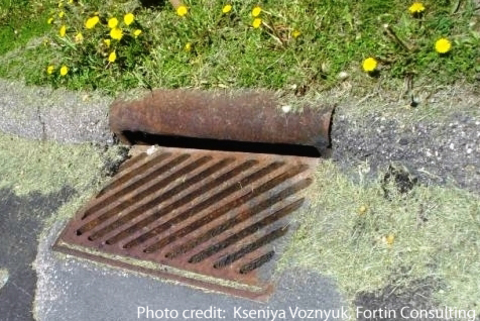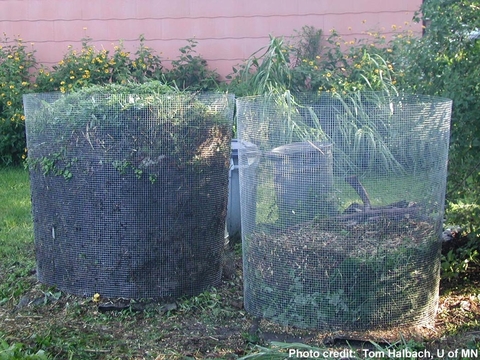Quick facts
- Lawn clippings usually do not need to be bagged.
- Recycling lawn clippings can reduce your fertilizer needs and improve your soil.
- Recycling clippings to the lawn does not contribute to thatch.
- If you must remove clippings, they can be composted or used as mulch.
Recycle your lawn clippings
Grass clippings will always be a part of lawn care. You can bag clippings or recycle them by returning them to the lawn.
As a general rule, grass clippings of an inch or less in length can be left on your lawn where they will filter down to the soil surface and decompose quickly. Remove longer clippings because they can shade or smother grass beneath causing lawn damage.
Don’t throw out bagged grass clippings as yard waste. Use clippings as a garden mulch or compost them instead.
Benefits of recycling clippings to the lawn
- Clippings are a valuable source of nutrients and you can use less nitrogen fertilizer if you recycle clippings to the lawn.
- Adding organic matter from clippings may help improve your soil if it is sandy, heavy clay or low in organic matter.
- Regular mowing will greatly reduce the need to collect clippings. Avoid cutting more than 1/3 of the grass height at a time.
Do clippings increase thatch?
Thatch is a layer of undecomposed organic matter that builds up between the soil surface and the actively growing green vegetation. A thatch layer will develop if organic matter is produced faster than it is decomposed.
Contrary to popular belief, leaving clippings on the lawn does not contribute to increased thatch.
Clippings are composed of water and easily-degradable compounds that break down rapidly and do not accumulate. Long clippings may contain wiry stem material that is slower to decompose, but are still not significant contributors to thatch buildup.
What causes thatch
- Vigorous grass varieties
- Excessive nitrogen fertilization
- Infrequent mowing
- Low soil oxygen levels (found in compacted or water logged soils)
When should you pick up clippings?
While leaving clippings on the lawn is recommended, there are some exceptions to the rule:
- Remove clippings if the lawn is heavily infested with diseases such as leaf spot, rust or dollar spot to help reduce disease severity.
- If the lawn is wet or the grass has become too tall when you mow, clippings can mat together and smother the grass.
- If your mower is unsafe to operate without a bagging attachment, the bag must be left in place.
- If clippings land in a curb and gutter area, sweep them up so they don’t get into storm drains or carried to nearby water resources where they can negatively impact water quality.
Using clippings as mulch
In general, putting mulch around flowers, vegetables, shrubs and trees helps reduce weeds, conserve moisture and moderate soil temperatures. Grass clippings are a good mulch option with a few conditions:
- Do not apply more than 1 or 2 inches of grass clippings at one time.
- Use dry clippings. Wet grass clippings can mat down, reducing reduce oxygen and moisture from getting down into the soil.
- When oxygen is limited, anaerobic decomposition of the clippings may take place, leading to the production of offensive odors.
- Do not use grass clippings as mulch if the lawn was recently treated with an herbicide for dandelions or other broadleaf weeds as this may harm your plants.
- If your lawn has been treated recently, consult the herbicide product label for any concerns related to using clippings as mulch.
Composting clippings
You can add clippings to the backyard compost pile.
Composting involves mixing grass clippings and other plant materials with a small amount of soil containing microorganisms that decompose organic matter. Grass clippings are excellent additions to a compost pile because of their high nitrogen content.
Grass clippings should not be the only compost material. As with mulches, a thick layer of grass clippings in a compost pile will lead to bad odors from anaerobic decomposition. Mix them with dry materials such as leaves or straw.
See Composting and mulching – A guide to managing organic yard wastes.
Reviewed in 2024



